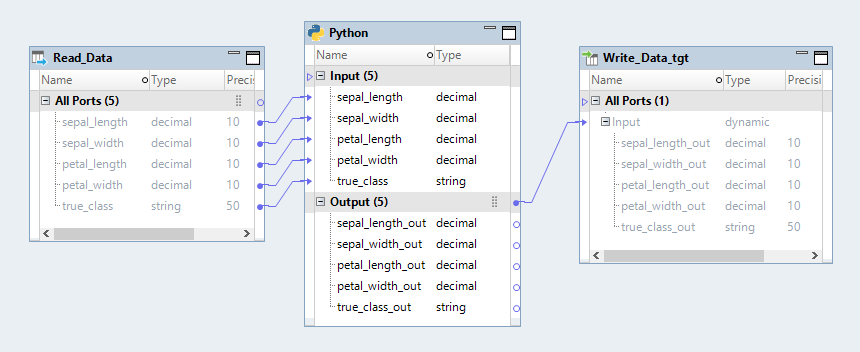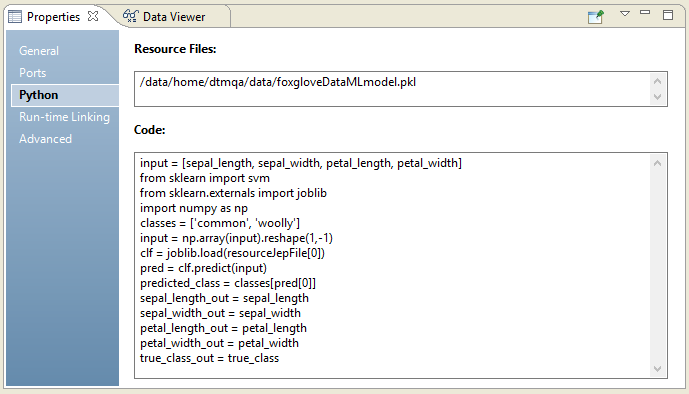Python Transformation Use Case
You work for a pharmaceutical company and you are studying data on flower formation in foxglove in your research to provide a better treatment for heart diseases. You want to find out whether the common foxglove Digitalis purpurea or the woolly foxglove Digitalis lanata can provide a better prognosis for the development of a disease.
To perform your research, you must classify data on the length and width of the flower sepals and petals by flower species. To classify the data, you developed a pre-trained model outside of the Developer tool.
You operationalize the pre-trained model in the Developer tool. In the Developer tool, you create a mapping that contains a Python transformation. In the Python transformation, you list the pre-trained model as a resource file. You write a Python script that accesses the pre-trained model. You pass the data on flower sepals and petals to the Python transformation to classify the data by foxglove species.
The following image shows the mapping that you might create:
The following image shows the Python code you might write to access the pre-trained model in the Python transformation:
The Python transformation processes the data in the input ports according to the Python script and writes the classed data to the output ports.


